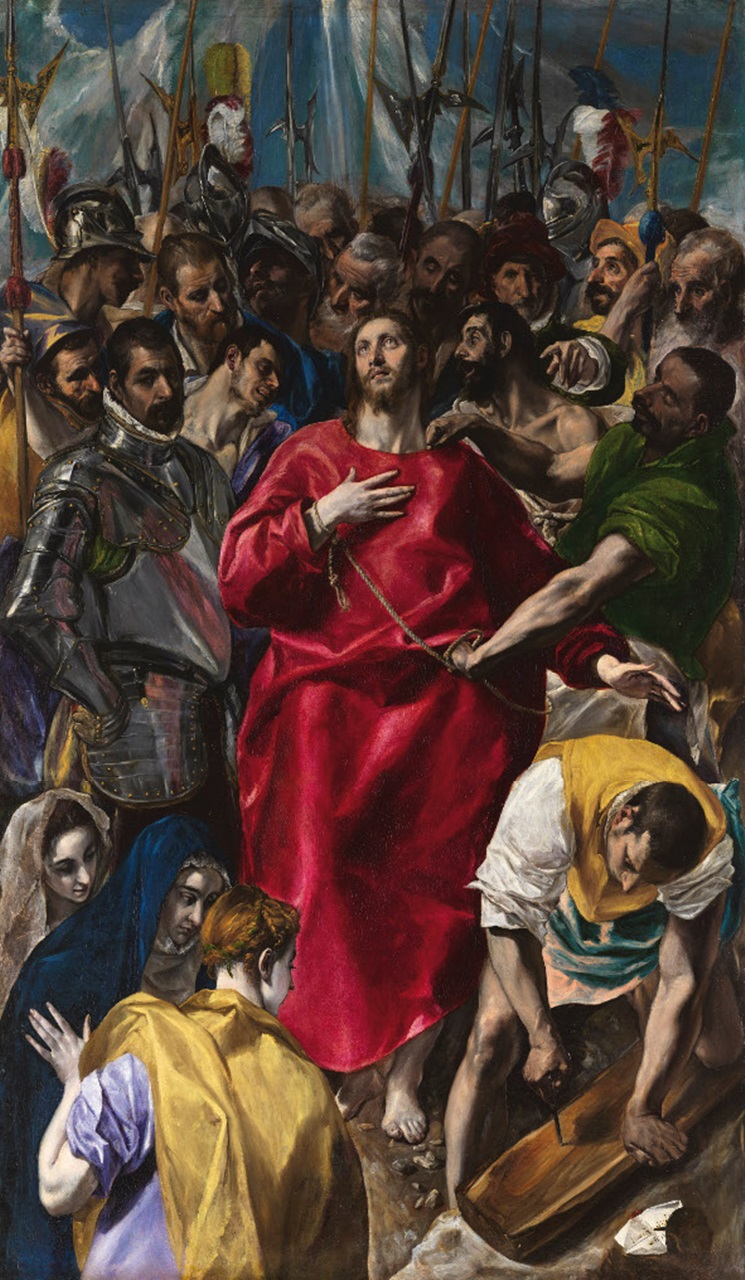El Greco's painting of the Expolio, the divestment of Christ on Calvary, is actually a synopsis of the Passion. The picture was painted for the sacristy of the Toledo Cathedral, where it still hangs, the room where priests vest for Mass. The ruby glow of Christ's vestment dominates the scene, but it will soon be divided by the executioners -- a reminder to priests to be ready for martyrdom. Its redness reverberates on many levels. It alludes to the robe the torturers put on Jesus to mock him, a robe dyed with cochineal -- the same substance El Greco used here as a colorant. It also refers to his garments being drenched with blood from the scourging and crown of thorns. "Who is this coming from Edom, from Bozrah, with his garments stained crimson? Who is this, robed in splendor, striding forward in the greatness of his strength? 'It is I, proclaiming victory, mighty to save.' " (Isaiah 63:1)
Some of El Greco's contemporaries referred to the painting as depicting the Arrest of Christ. It is that too. Note the crowd of armed soldiers and the rope. The composition is in fact based on earlier depictions of the arrest in Gesthemane. But we also see a man preparing the cross at lower right, while the three Marys on the left foreshadow the discovery of the empty tomb.
